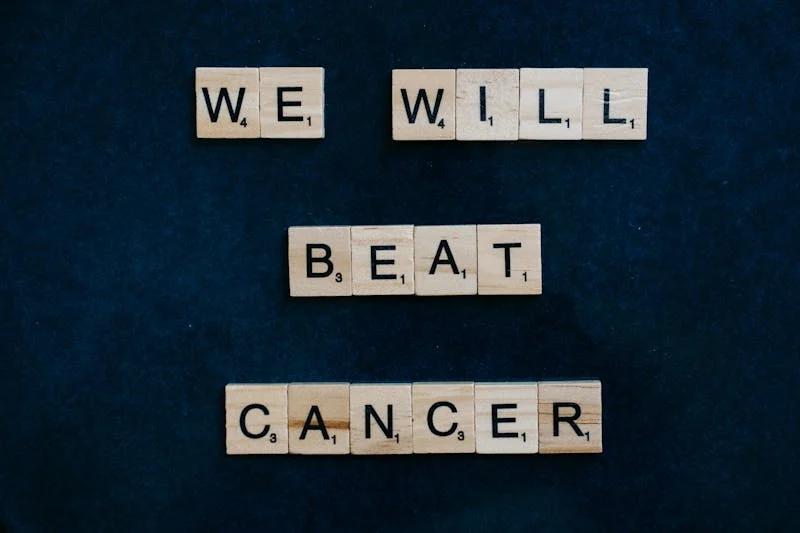Unlocking the Path: Your Guide to HPV Testing for Cervical Cancer
In this guide, we uncover the vital aspects of an effective HPV test, shedding light on the importance of identifying high-risk strains and oncoproteins. Learn the ins and outs of preparation for the test, locating a nearby screening facility, and exploring avenues for financial support, guaranteeing access to crucial healthcare services. Dive into the subsequent steps post-test, whether the results are negative or positive, and grasp the significance of additional evaluations and treatment pathways such as colposcopy.
Here we will discuss the ideal HPV test, how to prepare for it, find a center near you, fund the test and collect the sample. Upon completion of the test and if it turns out negative what should you do next, but if it is positive, how should you treat it and from where can you receive funding support?
The Ideal HPV Test
There are various types or strains of Human Papilloma Virus (HPV) and not all of them have the high risk of causing cervical cancer. Those which have the high risk of causing cervical cancer are called the high risk strains. There are several of them. They include Types 16 and 18 which are responsible for 70% of cases and types 31, 33, 35,45,52,58, being responsible for the remaining 30%.
The presence of these high risk strains does not mean cancer will occur. It is their persistence. In other words, our bodies have the ability to eliminate them in 80% of cases. It is only in the 20% of them which persist that cancer occurs. These persistent ones have been shown to cause cancer by the expression of some proteins which causes transformative changes in the cervical cells (pre-cancer) which may eventually result to cancer if not treated. These proteins are called oncoproteins, shortened from two words – “oncogenic proteins”, meaning cancer-causing proteins whereas the word “onco” is Latin for cancer. The oncoproteins in high risk strains of HPV are E6&E7 and the screening test for them should be oncogenic HPV.
Therefore an ideal HPV test should NOT ONLY find these high-risk types but should also detect the presence of the oncoproteins E6 & E7. The presence of any of the high risk HPV with these oncoproteins in a woman for many years can lead to cell changes that may eventually result to cervical cancer if not treated in time.
To book for your Oncogenic HPV screen or to find a center near you click here.
Preparing for an HPV Test
There are preparations (dos and don’ts) for the woman desiring to do the HPV testing. These are steps you to ensure the best possible result is gotten from the HPV test.
- Avoid scheduling your test on a day expected to be on your menstrual period. If your period begins unexpectedly and will be continuing on the day of your test, try to reschedule the appointment.
- Avoid sexual intercourse 48 hours before the test.
- Do not douche (clean your vaginal with a liquid) 48 hours before the test.
- Do not use tampons, or vaginal creams, foams, films, or jellies (such as spermicides or medications inserted into the vagina) for 48 hours before the test
Finding a Center for HPV Test
Ask your doctor for the nearest center to you for the oncogenic HPV testing but if you don’t have a doctor or need immediate direction click the explorer to find the nearest center to you or click here to get there quickly.
Funding the HPV Test
Paying for the HPV test can happen in three ways –health insurance, out-of-pocket and loan. Sometimes, the screening may be funded by NGOs and philanthropists.
For a list of Health Management Organizations (HMOs) with premium policies that cover cervical cancer screening, click here. In the absence of insurance coverage, the woman may have to pay out of her pocket for the screening but if she cannot afford it, she can access a Cancer Screening Loan (CSL) from a third party partner bank – Sterling Bank. This loan can be paid over a period of months.
She may also register here and indicate interest in free screening so that she would be notified when philanthropists, celebrants or NGOs fund free screenings or schedule for medical outreaches in their communities.
How to Collect the Sample.
A sample of cells or fluid collected from the cervix is used to test for the presence of Human Papilloma Virus. This sample can be collected by the health worker using special instruments or by the woman using a Do-It-Yourself (DIY) device such as Delphi Vaginal Self Sampler (DVSS) from Mobilab USA. Sample collected by this method remains viable for 6 hours.
Watch the video to see how to collect your sample of cervical lavage.
When the HPV Test is Negative?
If the oncogenic HPV Test turns out negative, it means you don’t have the virus with an accuracy that depends on the sensitivity of the test kit used. You may at this time receive your vaccination if not previously received. You may also repeat the test after 3-5 years.
When the HPV Test is Positive?
If your HPV test is positive, additional test will need to be performed for further assessment and treatment if need be. If possible this test should be done immediately if the facilities and resources are available.
These most valuable method for further assessment is Colposcopy. If the center she did the screening does not have this equipment, they will refer her to one that performs the service. Alternatively she can use the Centre Explorer above to search for the nearest center in her city or state that has the facility.
If she finds a center with Colposcopy but cannot afford it immediately, she can access a Cancer Screening Loan (CSL) from a Partner Bank – Sterling Bank by registering here. This loan can be paid over a period of months.
She may also use her health insurance to access this service if her policy covers the treatment.
If the colposcopy and associated tests such as biopsy confirm a case of cancer, she can access the Cancer Health Fund of the Federal Government of Nigeria by clicking here, if she needs help with treatment costs.
WHAT IS COLPOSCOPY?
Colposcopy is an examination of the vagina and cervix using a lighted magnifying instrument called a colposcope. It has the capacity to illuminate the cervix, enable collection of biopsy (tissue for analysis) and performance of treatment depending on what the doctor sees during the procedure.
The following assessment and treatment procedures can be done during a colposcopy depending on the findings and needs:
- Colposcopic biopsy: While viewing your cervix with a colposcope, the healthcare provider may remove a small amount of tissue which will be sent to a laboratory where another doctor examines it with for precancerous or cancer cells. You may experience some bleeding and discharge after the exam and discomfort similar to menstrual cramps. Ibuprofen can be taken to relieve these symptoms
- Cone biopsy: A cone-shaped sample of tissue is removed from the cervix to see if abnormal cells are in the tissue beneath the surface of the cervix. This specimen is much bigger than the biopsy done in the office without anesthesia. A sample of tissue can be removed for a cone biopsy using a LEEP cone procedure, which can be done under local anesthesia, or a knife cone procedure, done in an operating room under local or general anesthesia. You may have some vaginal bleeding for about a week and some spotting for about three weeks after the procedure.
- LEEP (Loop Electro-Surgical Excision Procedure): The LEEP is performed using a small heated wire to remove tissue and precancerous cells from the cervix. This procedure can be done in your provider’s office and requires local anesthesia. There may be some cramping during and after the procedure. You may have moderate to heavy vaginal discharge that lasts for up to three weeks.
- Cryotherapy: This is a procedure in which an extremely cold liquid or an instrument called a cryoprobe is used to freeze and destroy abnormal tissue
Conclusion
In conclusion, navigating through HPV testing for cervical cancer requires thorough understanding and preparedness. From selecting the ideal HPV test to collecting samples and interpreting results, each step is crucial in ensuring early detection and timely treatment. Whether the outcome is negative or positive, knowing the next course of action, including accessing further assessments like colposcopy and exploring funding options, empowers individuals to take charge of their health journey. By equipping oneself with knowledge and resources, women can proactively safeguard their well-being against cervical cancer.
Related Posts

25.03.2024
Bridging Gaps, Saving Lives: Zerocancer's Community Out...
Zerocancer is a proactive force in battling cancer, going beyond awareness campaigns to focus on prevention, early detection, and accessible...

23.03.2024
Empowering Lives: A Guide to Early Cancer Detection
In this post, explore the vital role of early cancer detection with a guide on screening methods, risk factors, and proactive measures.